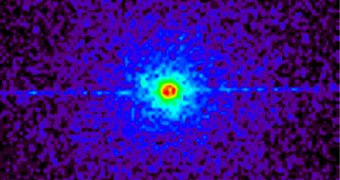Our Universe could be made of more than the three space dimensions we can perceive through our limited senses. In addition to length, width and depth, one or more spatial dimensions could exist in exotic places in space.
This is exactly what a team of astronomers wants to search for, in the regions of space around dense quark stars, known as neutron stars. Classical physics theories describe three physical dimensions: from a particular point in space the basic directions in which we can move are up/down, left/right, and forward/backward. Movement in any other direction can be expressed in terms of just these three.
Theories such as string theory and M-theory predict that the space in general has in fact 10 or 11 dimensions, respectively, but that the universe, when measured along these additional dimensions, is subatomic in size. As a result, we perceive only the three spatial dimensions that have macroscopic size. We as humans can only perceive up to the third dimension while we have knowledge of our travel through the fourth. We however can not perceive anything past the fourth.
Gergely Gabor Barnaf?ldi and colleagues at the Research Institute for Particle and Nuclear Physics in Budapest, Hungary, say that extra spatial dimensions could be found in areas that have extremely high gravity, which is exactly what happens around neutron stars.
Cygnus X-3 is a binary system, composed of a normal star that orbits a second, far denser, neutron star. This increased gravity could provide the necessary conditions for extra dimensions to affect matter. Even more interesting is the hypothesis that the ultra-high energy particles this system hurls into space, as far as Earth, could in fact have been tweaked by an extra dimension inside the system.
These particles, dubbed "cygnets" crash into our atmosphere and decompose into muons, elementary particles with negative electric charge, which, together with electrons, the tau and the neutrinos, are classified as leptons.
Random showers of these cygnets have been detected on Earth since 1981, using underground detectors and they were coming from the direction of Cygnus X-3. These particles are extremely strange, since no known particles could last the 37,000-light-year journey from Cygnus X-3 to Earth without decaying.
A possible explanation would be the fact that the cygnets may come from quark stars, thought to form when neutron stars collapse. If such quark stars contained a large number of "strange" type quarks, they might radiate out long-lived cygnets. The problem is that so many strange quarks in a star would make it collapse into a black hole.
The most logical explanation for the weird behavior of these particles would be a universe-spanning fifth dimension rolled up into tiny "rings", that doesn't affect mater in most parts of the Universe, but only exists around these strange quarks.
"If we could watch these quarks, they would seem to travel along our three dimensions more slowly than expected because, at the same time, they have to circle round this invisible curly extra dimension," says team member Peter Levai. "Effectively they behave as strange quarks."

 14 DAY TRIAL //
14 DAY TRIAL //